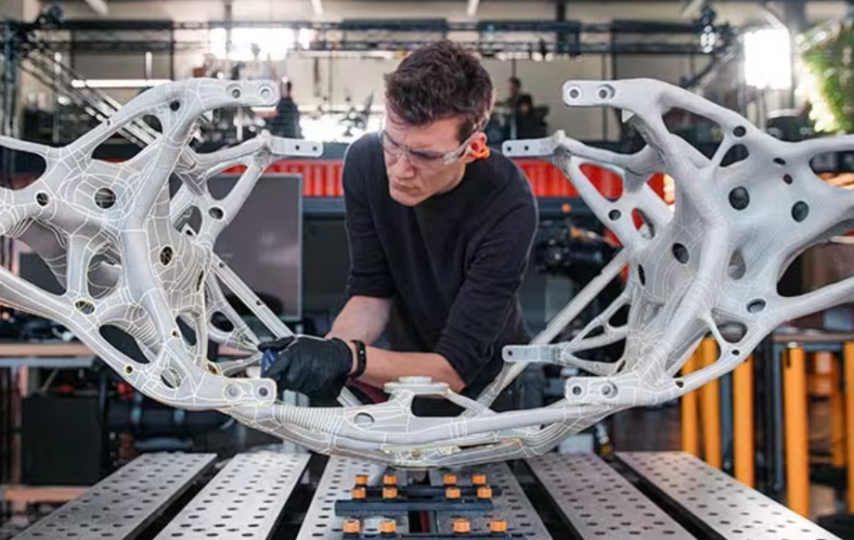Additive manufacturing, also known as 3D printing, has revolutionized the engineering industry by providing faster and more cost-effective solutions to complex production needs. It is a process of building three-dimensional objects from digital models layer by layer. This technology has opened up new possibilities for product design and development that were not previously available. Samer Najia explores the uses of additive manufacturing in engineering and discusses its many benefits for businesses.
The Benefits Of Additive Manufacturing For Engineers
Additive manufacturing, or 3D printing, revolutionizes how engineers design and produce components and systems. Unlike traditional manufacturing methods, such as machining or casting, additive manufacturing builds objects layer by layer using digital data from computer-aided design (CAD) software. This innovative approach offers significant benefits, such as faster production times, lower costs, and greater design flexibility.
Engineers can easily create complex geometries, prototypes, and customized solutions previously impossible or impractical with traditional manufacturing techniques. Additive manufacturing is already being used in a wide range of industries, including aerospace, automotive, medical, and consumer products, and its potential for future applications is immense. As technology advances and becomes more accessible, engineers have even more reasons to embrace additive manufacturing as a valuable tool for their design and production needs.
Different Additive Manufacturing Techniques and Materials
Additive manufacturing is an umbrella term encompassing several techniques. Fused deposition modeling (FDM) and stereolithography (SLA), two of the most commonly used methods, are based on melting or softening material to produce a 3D form. Other processes include selective laser sintering (SLS), binder jetting, and direct metal laser sintering (DMLS). Many materials, such as thermoplastics, polymers, metals, ceramics, and composites, can be used for additive manufacturing.
The amount of control engineers have over the process increases with each technique – from how fine a layer is to what material it is made from. This degree of control allows them to create custom parts with the exact properties and performance needed for any given application.
Exploring Real-World Applications of Additive Manufacturing in Engineering
Engineering already uses additive manufacturing to create strong, lightweight, and cost-effective components. Engineers have leveraged the advantages of additive manufacturing in various applications, from rocket engines to medical implants. In the aerospace industry, 3D printing has enabled engineers to produce complex engine parts, such as fuel injectors and turbine blades, quickly and cost-effectively. In the medical field, 3D printing is used to create custom implants, prosthetics, hearing aids, and dental replacements that are more comfortable for patients than traditional ones.
Additive manufacturing is also used in various consumer products ranging from apparel to eyewear. As technology advances and becomes more accessible, additive manufacturing will continue to be a game-changing tool for engineers in all industries. By exploring the various techniques, materials, and applications of 3D printing, engineers can gain an even greater understanding of how additive manufacturing can help them create innovative and cost-effective products. With its potential for faster production times, improved design flexibility, and lower costs, additive manufacturing is a technology that engineers should take full advantage of.
Ways To Utilize Additive Manufacturing More Effectively
To make the most of additive manufacturing, engineers need to understand how to optimize their designs for 3D printing. This includes selecting the suitable material and technique, as well as taking into consideration factors such as wall thickness and part orientation. Additionally, engineers should explore software programs that can help them streamline the design process by automatically generating the necessary digital data for 3D printing.
Engineers should also be proactive in researching new technologies and materials to keep up with advancements in additive manufacturing. As technology continues to evolve, so will the opportunities for engineers to create unique, cost-effective products and components using this revolutionary process. By exploring all aspects of 3D printing, engineers can maximize their use of this powerful tool to revolutionize their design and development.
Final Thoughts
Samer Najia knows that by exploring additive manufacturing, engineers will have a powerful tool to revolutionize how they design and develop components. From improved creative freedom to faster production times, the advantages of 3D printing are numerous and constantly growing. With its potential for creating complex parts quickly and cost-effectively, it is no wonder more and more engineers are turning to additive manufacturing to advance their design and production capabilities. By staying up-to-date on the latest 3D printing technologies, engineers can unlock the full potential of this innovative process to create unique, cost-effective solutions for any application.








